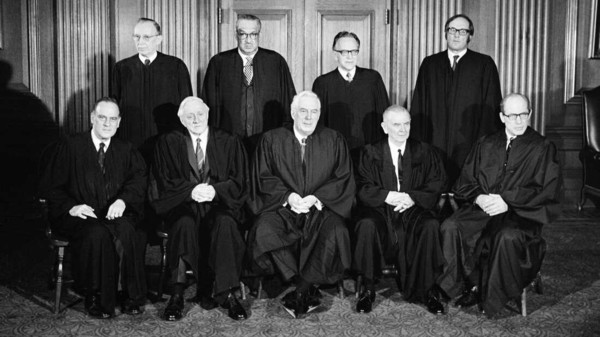Advocates of pro-choice in the US have spent more than half a century fighting to give women their right to body autonomy. However, the recent debate regarding the jurisdiction of abortion laws arising under a Supreme Court with conservative majority have caused apprehension in the pro-choice community that their decades of hard work will come undone. In this Spotlight, we discuss the history of debate on abortion laws since Roe v. Wade and implications of the decision to overturn the case.
Roe v. Wade is a landmark case in which the US Supreme Court articulated the right to abortion as a fundamental right on January 22, 1973. The case was between Norma McCorvey — then hidden behind the fictional name “Jane Roe” — and Henry Wade, the district attorney of Dallas who enforced Texas’ statutes that criminalized abortion. In the end, the Supreme Court ruled in favor of McCorvey. The court’s decision to make abortion a constitutional right set the baseline for abortion laws for the next half century until now, when a leak indicated that the current Supreme Court has plans to overturn Roe v. Wade.

In the original case, McCorvey argued that abortion is a purely private matter. The complications of the case arose from the fact that the American constitution does not clearly establish privacy in relation to acts of contraception. However, in 1965, Griswold v. Connecticut set precedent that there is a fundamental right to privacy involving contraception: the court ruled against a Connecticut law, saying that if provided a doctor’s prescription, contraception should be accessible to married couples. This was soon followed by Eisenstadt v. Baird, which gave not only married couples but also single people the right to use contraception. These two cases laid the foundation for Roe v. Wade, which now purports that abortion, akin to contraception, is merely a way of enacting one’s private decision of whether or not to have a child.
The opposing side, however, argued that since the Constitution does not explicitly express that abortion is a right, each state has the moral obligation to criminalize abortion. The belief that there is a need to regulate abortion stems from the understanding of a state’s obligation to protect those who cannot protect themselves. In other words, those who are against abortion view fetuses as live individuals that deserve protection, but pro-choice advocates do not share those beliefs. The majority of the contention between the pro-life and pro-choice movements lie in their recognition of fetal personhood.
Though the Supreme Court recognized the state’s interest in protecting the unborn life, Roe v. Wade ruled that the woman’s choice of motherhood outweighs that interest. However, in an attempt to balance both interests, the Court introduced a trimester framework. In the first trimester of pregnancy, the state had no power to regulate abortion at all, while in the second trimester, only regulations for the mother’s health and safety were allowed. In the third trimester, the court ruled the states could fully ban abortion, except for when abortions are necessary for “life and health reasons”. However, the court’s definition of health included “all factors — physical, emotional, psychological, familial, and woman’s age — relevant to the well-being of the patient.” This definition of “life and health reasons” virtually put no restrictions on abortion since any grounds for abortion can reasonably fall under any of these factors. This total lack of limitations meant that amendments to the Court’s ruling in Roe v. Wade were sure to come.
Planned Parenthood v. Casey overturned the trimester framework from Roe v. Wade in favor of viability analysis, wherein the physician decides whether or not the fetus is likely to survive outside the womb. States were also allowed to implement abortion restrictions as early as the first trimester as long as they were not enacted for “the purpose or effect of placing a substantial obstacle in the path of a woman seeking an abortion of a nonviable fetus” — otherwise known as the “undue burden” standard. Though Planned Parenthood v. Casey resulted in restrictions on abortion, it still put women’s rights at the forefront with its decision to use the “undue burden” standard. In 2016, the case ruling prevented Texas state laws from requiring abortion doctors to have admitting privileges in nearby hospitals.
Roe v. Wade gave women the right to decide whether or not they want to become a mother. However, following that landmark decision, restrictions on abortion were added little by little. Though they appeared to be reasonable at first, seemingly taking the mother’s health in utmost consideration, the past few years have trended towards laws that aim to criminalize abortion once again. Texas’ Heartbeat Act of 2021, which effectively put a bounty on the heads of abortion providers, is a prime example of such laws. Roe v. Wade has set the precedent for progressive laws involving women’s health for decades. If it indeed does get overturned, it’s only reasonable to worry that other progressive rights that were not explicitly stated in the US constitution might be in danger as well.

